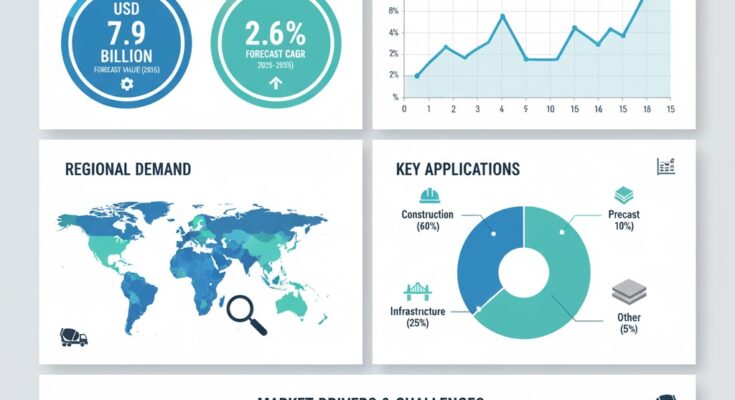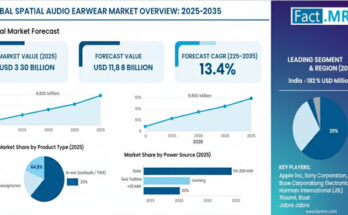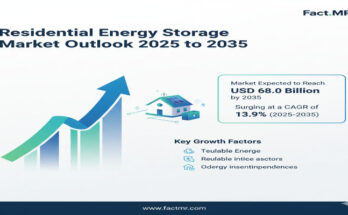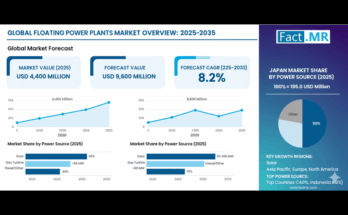The global concrete mixer market stands at the threshold of a decade-long expansion trajectory that promises to reshape construction equipment technology and building project solutions. According to a recent report by Fact.MR, the market is projected to grow from USD 6.2 billion in 2025 to approximately USD 7.9 billion by 2035, reflecting a CAGR of 2.6% during the forecast period.
This growth underscores the rising adoption of advanced construction machinery, automation in material handling, and the increasing focus on efficient, sustainable infrastructure development. As governments and private developers continue to invest in urbanization, industrial facilities, and transport networks, concrete mixers are becoming indispensable for modern construction processes.
Strategic Market Drivers
- Infrastructure Development and Urbanization Boom
Global infrastructure spending is accelerating, particularly in emerging economies across Asia, the Middle East, and Latin America. Mega projects in transportation, housing, and energy are fueling demand for high-capacity and automated concrete mixers. The growing trend of smart cities and rapid urbanization further amplifies the need for efficient concrete production systems capable of handling large volumes with precision.
- Technological Advancements in Mixer Design
Modern concrete mixers are increasingly being equipped with digital control systems, automated loading mechanisms, and real-time monitoring sensors. These advancements improve mixing accuracy, reduce energy consumption, and enhance operator safety. The shift toward electric and hybrid-powered mixers is also gathering pace as sustainability becomes a core industry focus.
- Demand for Portable and On-site Mixing Solutions
The rise in small- and medium-scale construction projects, particularly in residential and rural infrastructure, is boosting the demand for mobile and self-loading concrete mixers. Their flexibility and ease of transport make them ideal for projects with space constraints or limited access to central batching plants.
- Sustainability and Green Construction Trends
As environmental regulations tighten, there’s growing emphasis on reducing carbon footprints in the construction industry. Manufacturers are developing mixers that minimize cement waste, optimize water usage, and integrate eco-friendly materials. Electric and hybrid variants are also being introduced to lower emissions in urban construction zones.
Regional Growth Highlights
East Asia: Leading Global Production
East Asia continues to dominate the global concrete mixer market, driven by large-scale urbanization projects and industrial expansion. China, with its vast construction ecosystem, remains a critical growth hub, while Japan and South Korea are pioneering automation and smart construction technologies that enhance mixer performance and reliability.
North America: Emphasis on Efficiency and Innovation
The U.S. and Canada are witnessing steady growth supported by aging infrastructure replacement and green construction initiatives. The region’s focus on energy-efficient and automated concrete production systems is driving adoption among contractors and equipment rental companies.
Europe: Transition to Low-Emission Machinery
Europe’s market growth is underpinned by stringent environmental standards and the EU’s commitment to carbon neutrality. Manufacturers are investing in electric-powered concrete mixers, while countries such as Germany, France, and Italy are leading in technological innovation and modular construction solutions.
Emerging Markets: Latin America and the Middle East
Rapid urban development, housing demand, and government-backed infrastructure projects are unlocking new opportunities in Latin America and the Middle East. Increased investment in road, port, and energy infrastructure is fueling the uptake of both stationary and mobile concrete mixers across the region.
Market Segmentation Insights
By Product Type
- Self-loading Mixers: Witnessing the fastest growth due to enhanced mobility and reduced dependency on manual labor.
- Transit Mixers: Continue to dominate large infrastructure projects requiring on-site concrete delivery.
- Stationary Mixers: Preferred in industrial-scale operations and ready-mix concrete production.
By Application
- Residential Construction: Driven by housing projects and urban development.
- Commercial Construction: Supported by growing investments in office spaces, retail complexes, and public infrastructure.
- Industrial & Infrastructure Projects: Expected to sustain demand for high-capacity and automated mixers.
By Power Source
- Diesel-powered Mixers: Continue to dominate but are gradually being replaced by cleaner alternatives.
- Electric Mixers: Projected to gain traction with reduced emissions and lower operational costs.
Challenges and Market Considerations
- Rising Raw Material Costs: Fluctuations in steel and component prices increase production expenses.
- Maintenance and Operational Costs: Complex machinery requires regular servicing, which can impact profitability.
- Environmental Regulations: Compliance with emission standards necessitates design innovation and investment.
- Supply Chain Volatility: Delays in component availability can hinder production and delivery schedules.
Competitive Landscape
The concrete mixer market is moderately consolidated, with major global and regional players focusing on product innovation, sustainability, and smart automation. Leading manufacturers are expanding their portfolios to include hybrid and digitalized equipment for construction firms worldwide.
Key Players in the Concrete Mixer Market:
- CIFA
- Schwing Stetter
- Liebherr
- SANY
- Volvo CE
- Zoomlion
- Terex
- Fiori
- KCP
- Stamixco
These players are emphasizing technological upgrades, strategic mergers and partnerships, and sustainability-focused R&D to maintain competitiveness.
Maufracture’s Strategic Positioning
Maufracture is strategically positioned to capitalize on the expanding global concrete mixer market through:
- Innovation in Equipment Design: Developing smart, energy-efficient mixers with advanced automation controls and real-time monitoring.
- Geographical Expansion: Strengthening presence in high-growth markets across East Asia, the Middle East, and North America.
- Sustainable Manufacturing: Integrating recyclable materials and adopting eco-friendly production practices.
- Collaborative Partnerships: Working closely with construction companies and infrastructure developers to deliver tailored solutions for diverse project requirements.
Future Outlook: Toward Smarter, Greener Construction
The next decade marks a transformative period for the concrete mixer market, driven by automation, electrification, and digital integration. As the construction sector evolves toward sustainability and efficiency, demand for intelligent and eco-friendly mixers will continue to surge.
Manufacturers that combine technological sophistication, sustainability, and cost efficiency will define the next chapter of growth. With its focus on innovation and green technology, Maufracture is well-positioned to lead this transformation building the foundation for a more connected, efficient, and sustainable construction ecosystem.



